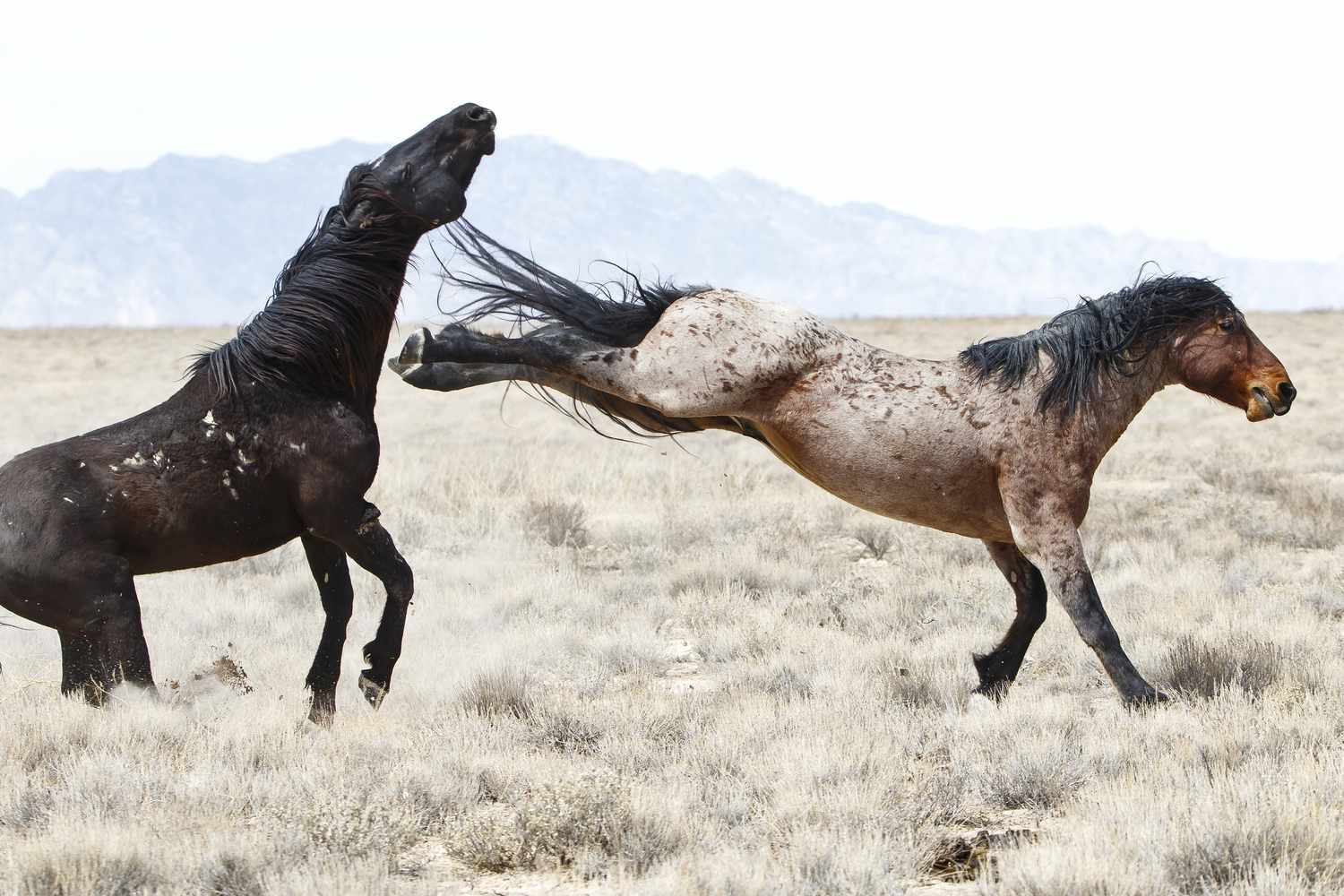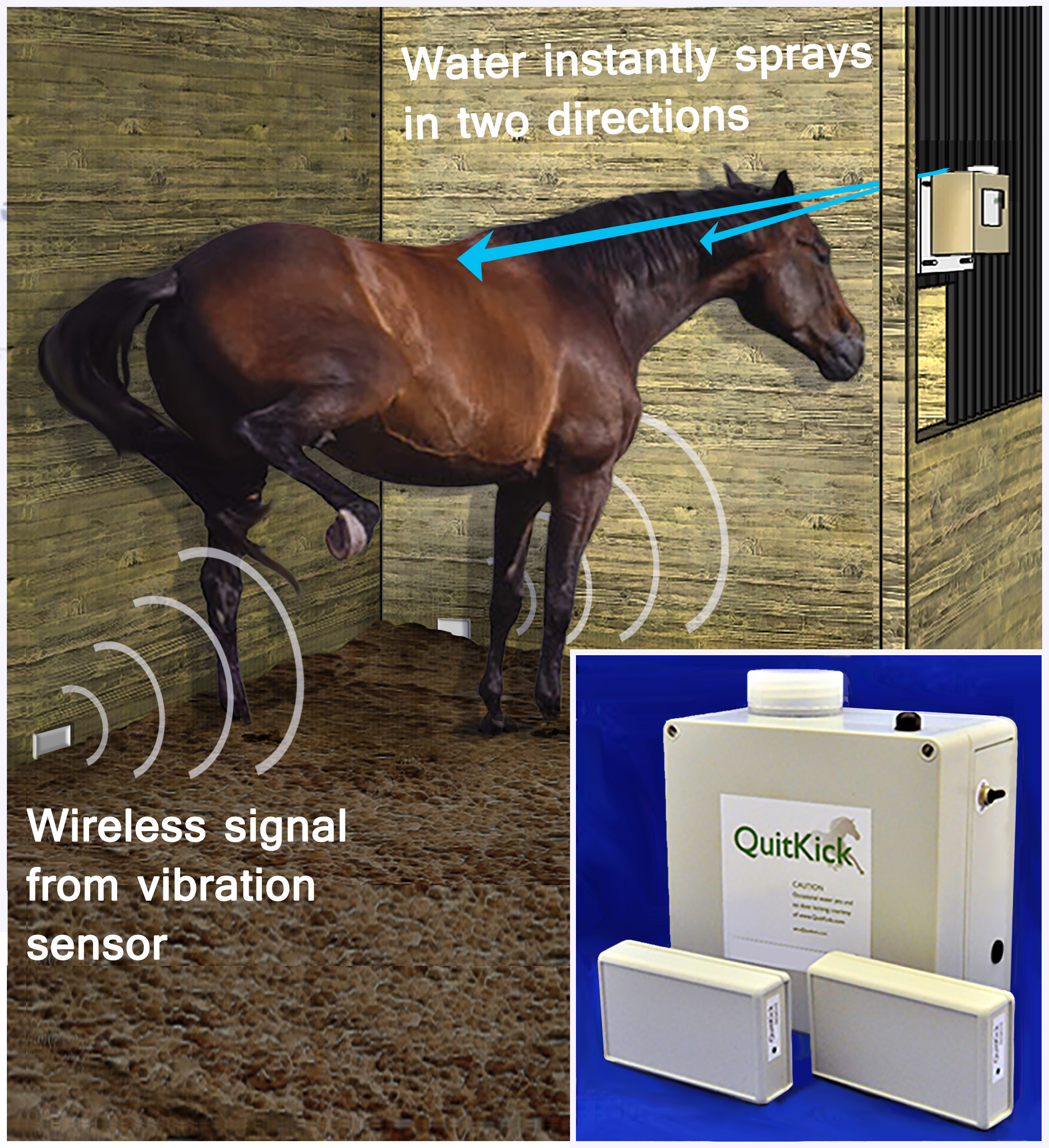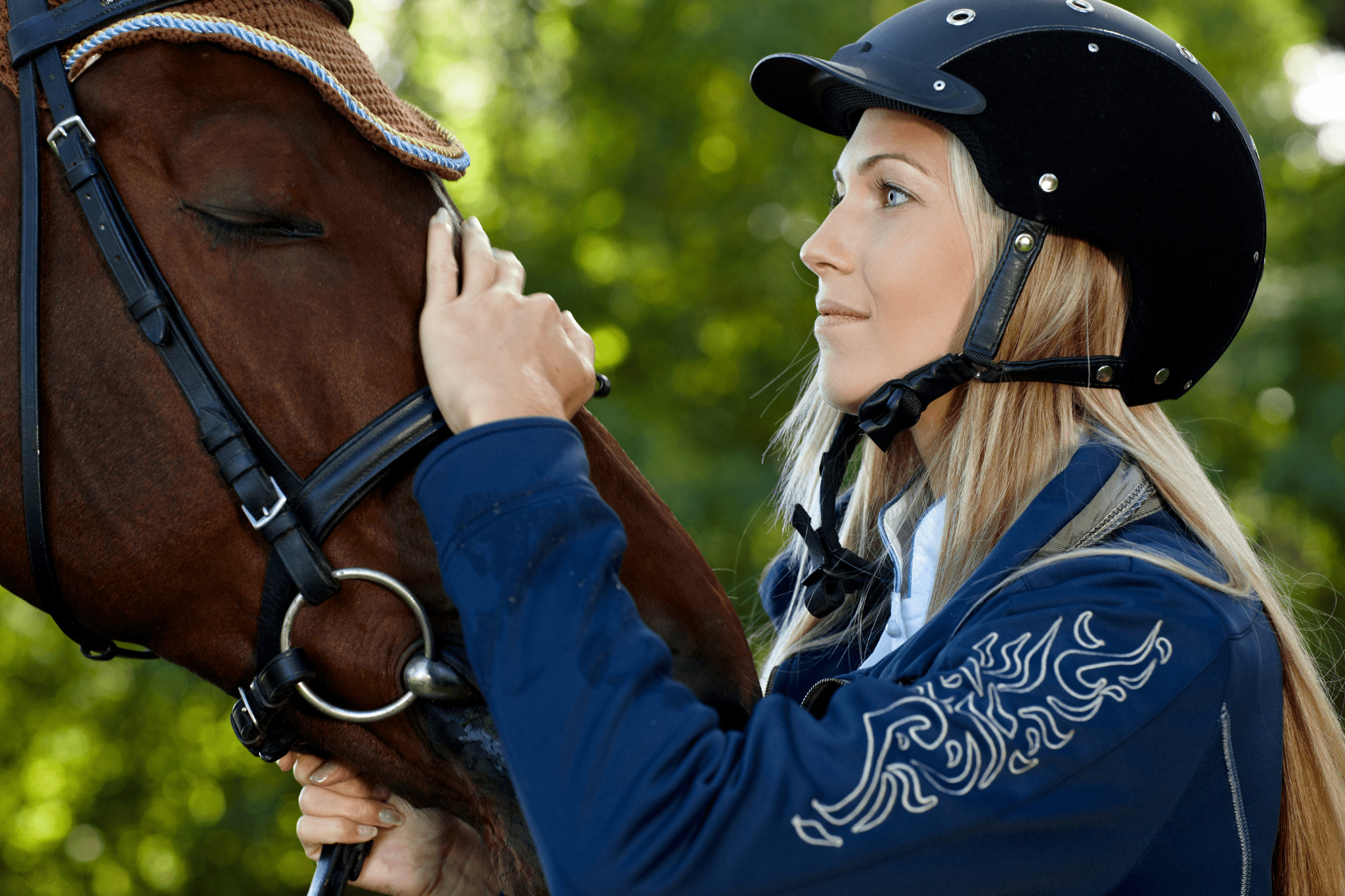Dealing with a horse that kicks can be a challenging and sometimes dangerous experience, especially when it comes to handling their back feet. This behavior can create a significant obstacle for routine hoof care and vet visits. In this comprehensive guide, we will dive into the various aspects of why horses kick when their back feet are lifted and how to address this behavior safely and effectively.
When dealing with horse kicking when lifting feet, it’s important to note that horses naturally view their back legs as tools for defense. Kicking can be a reaction to feeling insecure or threatened. To address this, consider the following key points:
- Recognize that reluctance to have feet lifted is a widespread issue.
- Understand that lifting a horse’s feet compromises their ability to flee, triggering insecurity.
- Use a rope looped just under the fetlock to gently encourage the horse to yield to pressure.
- Focus on building confidence and consistency to prevent kicking.
Understanding Horse Behavior and Mitigating Kicking Risks

Exploring deeper into the psyche of horses and the varied stimuli that lead to kicking when their hooves are handled can greatly enhance handler safety and animal welfare. Recognizing the multifaceted nature of horse behavior related to kicking, we aim to shed light on contributing factors and share effective methods to reduce such occurrences.
Identifying Health-Related Causes of Kicking
Discomfort or pain is a significant factor that can provoke a horse to kick. Issues ranging from temporary soreness to chronic injuries can trigger this defense mechanism. Ensuring regular examinations from a veterinarian can pinpoint health concerns that need to be addressed.
Overcoming Negative Associations with Handling
Historical negative experiences involving their feet can result in a horse’s apprehensive and defensive demeanor. Specialized training strategies are crucial to help horses reconcile these memories and develop new, positive associations with hoof handling.
Interpreting Equine Communication
Kicking may also serve as an expression within the complex equine communication system. Accurate interpretation of these signals can guide handlers in making necessary adjustments to meet the horse’s needs and alleviate their concerns during hoof care.
Minimizing Environmental Distractions
The surroundings can significantly influence a horse’s comfort levels. A serene and predictable setting can be instrumental in diminishing stress and, consequently, the propensity to kick out of defense.
Enhancing Trust and Clear Communication
The foundation of a strong partnership between a horse and its handler is trust. When there is a disconnect or lack of confidence, a horse may respond with kicking. Through patient and consistent interaction, handlers can cultivate a more trusting and communicative bond.
Empathetic Handling Based on Instinctive Behavior
- Appreciating a horse’s instinctive behavior is essential in developing a compassionate handling strategy that minimizes the risk of kicking as a defensive action.
- Anticipating their natural reactions and working within their comfort zone can help ensure a more cooperative experience.
Challenging Misconceptions
It is crucial to challenge and clarify common misconceptions about the motivations behind a horse’s kick, as understanding the root cause is key to effective resolution.
Respecting Individuality in Horses
Recognizing that each horse has its own set of sensitivities and triggers is imperative for customized care and handling protocols that aim to reduce the likelihood of kicking.
Pursuing a Comprehensive Approach
An integrative strategy that considers the horse’s physical condition, environmental factors, and the dynamics of the horse-handler relationship is vital in addressing reasons horses kick during hoof care with the goal of achieving a safe and cooperative outcome.
Essential Techniques for Equine Safety and Kick Prevention

Understanding equine behavior is pivotal for ensuring effective and safe interactions between horses and handlers. This section delves into the strategies that foster a secure environment during routine handling, focusing on clear communication and respect for the horse’s natural instincts.
Establishing Guidelines for Respectful Interaction
Respect is the cornerstone of any horse-handler relationship. By approaching horses in a visible yet gentle manner, handlers can prevent startling them, especially during vulnerable activities such as hoof handling. This fosters a tranquil atmosphere conducive to safe interaction.
Proactive Measures to Reduce Kicking
To proactively address the risk of kicking, handlers can:
- Sharpen their skills in interpreting equine body language for early signs of stress.
- Gradually introduce horses to new experiences to prevent anxiety.
- Employ positive reinforcement to encourage desired behaviors.
Implementing Standard Handling Practices
Consistent handling practices are essential for accident prevention. Handlers should remain aware of their position relative to the horse, avoiding blind spots and areas where kicks are likely to occur. Adhering to these practices can help maintain a safe space around horses.
Encouraging Comfort and Trust in Training
The “approach and retreat” training technique can be an effective way to build trust. By advancing towards the horse until unease is evident and then retreating, handlers can gradually increase the horse’s tolerance to proximity and handling, decreasing the likelihood of kicking over time.
Promoting a Stable and Calm Handling Environment
A tranquil handling environment, free from disturbances, is fundamental for equine comfort. Key factors include:
- Selecting a peaceful area that the horse is familiar with for handling sessions.
- Eliminating potential triggers that may provoke anxiety or startling reactions.
- Developing a predictable routine to give the horse a sense of security.
Advocating for Measured and Thoughtful Interaction
Conveying composure through measured movements can help prevent startling the horse and triggering a defensive response. It is vital for handlers to embody a sense of calm and control during all interactions with their equine counterparts.
Enhancing Trust with Positive Experiences
Cultivating a positive rapport with horses through gentle touch, soothing vocal tones, and reward-based reinforcement can lead to a more harmonious relationship. This rapport is integral to reducing stress and mitigating kick risks.
Fostering a Culture of Comprehensive Equine Safety
Adopting an all-encompassing approach to equine safety is crucial. This involves educating handlers about equine behavior, needs, and communication cues. By implementing thorough safety measures, handlers can interact with horses in ways that prioritize the prevention of kicking and enhance overall wellbeing for both horse and handler.
Approaches to Curtailing Equine Kicking Behaviors

Curbing the instinctual kicking reactions in horses is a nuanced endeavor that demands an insightful and patient training regimen. The linchpin of reconditioning horses to maintain composure instead of kicking rests on a clear grasp of the factors contributing to this behavior and a strategic, progressive training plan. By fostering a serene and non-threatening atmosphere during training, we can recalibrate horses’ instinctual responses and promote their comfort during handling.
Gradual Exposure Techniques for Foot Sensitivity
Introducing tactile stimuli incrementally is a cornerstone technique for making horses comfortable with leg and foot contact. This approach entails a carefully measured process of acclimatizing the horse to being touched in these areas. Starting with non-threatening objects like a soft brush and advancing to more involved tools, this technique encourages horses to remain tranquil when their limbs are handled:
- Initiate contact at less sensitive areas before approaching the legs.
- Employ various textures and levels of pressure to familiarize the horse with an array of tactile experiences.
- Combine the tactile exercises with comforting verbal cues to foster positive connotations.
Boundary Setting and Leadership in Horse Training
Effective leadership is essential when working with horses that exhibit challenging behaviors. This requires the demonstration of confident body language and measured movements to convey leadership without resorting to force. Guiding exercises, such as maneuvering the horse’s hindquarters or instructing it to reverse on command, can help affirm the handler’s leadership in a composed manner:
- Employ clear and consistent cues to direct the horse’s actions.
- Incorporate pressure and release methods to affirm respectful behavior.
- Set a composed yet decisive tone during training sessions.
The Role of Regularity in Training Outcomes
Maintaining a steady training regimen is crucial for reinforcing appropriate behaviors and discouraging kicking. A structured routine aids in setting expectations and consolidating positive behaviors through repetition. Horses that are acquainted with what is anticipated of them tend to be more cooperative:
- Conduct training sessions at uniform intervals to establish a dependable routine.
- Approach training exercises in an orderly fashion, building on previous achievements.
- Confirm that all individuals working with the horse adhere to the same training guidelines for consistency.
Embracing Positive Reinforcement in Equine Training
Positive reinforcement is instrumental in shaping equine behavior. Promptly rewarding horses for correct responses, such as remaining stationary during foot handling, increases the likelihood of these behaviors becoming habitual. The form of reward should be immediate and consistent to solidify the horse’s understanding:
- Determine your horse’s preferred incentives and utilize them as rewards.
- Apply rewards systematically to enhance the training experience.
- Be vigilant not to accidentally encourage unwanted behaviors.
Optimizing the Environment for Training and Safety
Ensuring a distraction-free and secure setting is paramount for successful training sessions. Clear the area of any stress-inducing factors, creating a tranquil space conducive to learning. Familiarity and comfort in the environment can greatly alleviate a horse’s nervousness, allowing it to concentrate on the training:
- Select a secluded location away from disturbances and noise.
- Eliminate any items that could unexpectedly spook the horse or create hazards.
- Utilize well-known gear to minimize the introduction of too many novel factors simultaneously.
Integrating these strategies, handlers can devise a tailored program aimed at training horses not to kick. This program should be adaptive and evolve with the horse’s advancement, always striving to gently push the horse’s limits within its comfort zone while fostering a trusting bond. It’s important to recognize the individuality of each horse and customize the training to suit specific temperaments and requirements.
Maintaining Equine Hoof Health
Proper hoof maintenance is a critical aspect of equine health, ensuring a horse’s well-being, mobility, and performance. Neglecting hoof care can lead to discomfort and a host of problems, making it difficult for the horse during regular care sessions. A thorough hoof care routine is essential for preventing these issues.
Routine Hoof Maintenance
Conducting consistent hoof inspections and cleanings helps prevent debris buildup and infections. This process involves:
- Clearing out accumulated stones, dirt, and manure with a hoof pick.
- Examining the hooves for signs of disease or other issues.
- Following a farrier’s advice on applying conditioners to maintain hoof moisture.
Expert Hoof Care
Regular trimming and shoeing by a farrier are vital to maintain the hoof’s shape and overall balance. The farrier’s role includes:
- Trimming hooves at regular intervals to prevent overgrowth.
- Designing shoeing strategies tailored to the horse’s unique needs.
- Addressing any abnormalities in hoof growth or the horse’s gait.
Handling Hooves with Care
Proper technique is important when lifting a horse’s hind feet to reduce risk and ensure comfort. The following steps can aid in this process:
- Approach the horse steadily, using a soft voice to announce your presence.
- Caress the horse’s leg gradually to signal your intention before lifting the hoof.
- Encourage the horse to lift its foot by applying gentle pressure around the fetlock.
- Support the hoof carefully during inspection or cleaning, mindful of the horse’s comfort.
- Return the hoof to the ground softly to prevent startling the horse.
Determining the Need for Professional Intervention
While basic hoof care is manageable for most, identifying when expert assistance is needed is important. Signs to watch for include:
- Visible changes in hoof structure or texture.
- Changes in how the horse walks or stands.
- Signs of disease or serious hoof damage.
- Unusual behaviors that may indicate the horse is in pain.
Supporting Hoof Health Through Nutrition
Hoof health is influenced by diet, with certain supplements providing additional support:
- Incorporate key nutrients such as biotin, amino acids, and omega-3s for hoof strength.
- Work with a nutritionist to create a diet plan that meets your horse’s hoof care needs.
- Offer constant access to fresh water to promote overall vitality, including hoof condition.
Creating a Hoof-Friendly Environment
The horse’s living conditions directly affect hoof quality. To maintain hoof health:
- Ensure that stables are clean to prevent hoof degradation.
- Offer dry spots for the horse to stand to avoid hoof softening in wet conditions.
- Consider the exercise ground’s nature, as tough or irregular surfaces can speed up hoof wear.
By focusing on regular care, employing the expertise of professionals, and fostering an environment conducive to hoof integrity, we can secure a horse’s hoof health and ease in handling during routine care, thereby strengthening the partnership between horse and caregiver.
If you’re delving into the behavior of horses, you might find it intriguing that these majestic creatures have various ways of communicating and exhibiting their habits. Whether it’s a horse lifting its hind leg high when walking, a sign that could indicate discomfort or an expressive movement, or the way a horse holds its tail up when running, which can be a display of excitement or high spirits, these behaviors are fascinating to observe and understand. Moreover, understanding the reasons behind why a horse stands on its hind legs can provide further insight into equine behavior and communication. For those interested in equine body language and behavior, be sure to explore our articles on why a horse might lift its hind leg high when walking, how a horse holds its tail up when running, and what it means when a horse stands on its hind legs.
Preventative Measures and Solutions
Establishing Trust and Respect
Building a solid foundation of trust and respect between the horse and handler is perhaps the most vital element in preventing negative behaviors. When a horse trusts its handler, it is less likely to feel threatened and react defensively.
Step-by-Step Desensitizing Process
The desensitizing process should be broken down into small, manageable steps. Begin with gentle touches and gradually increase to lifting the foot for short periods. Always end on a positive note to reinforce good behavior and create a positive association with the action.
Long-Term Solutions for Better Equine Behavior
Long-term solutions involve a combination of training, consistency, and understanding. With the right approach, patience, and techniques, horses can learn to accept and even enjoy having their back feet handled. This leads to safer and more enjoyable interactions for all involved.
Addressing the issue of a horse that kicks when lifting its back feet is a multifaceted challenge that requires a deep understanding of equine behavior, consistent training, and a commitment to safety. With the right approach and techniques, even the most reluctant horse can learn to trust and cooperate during hoof care and handling.



